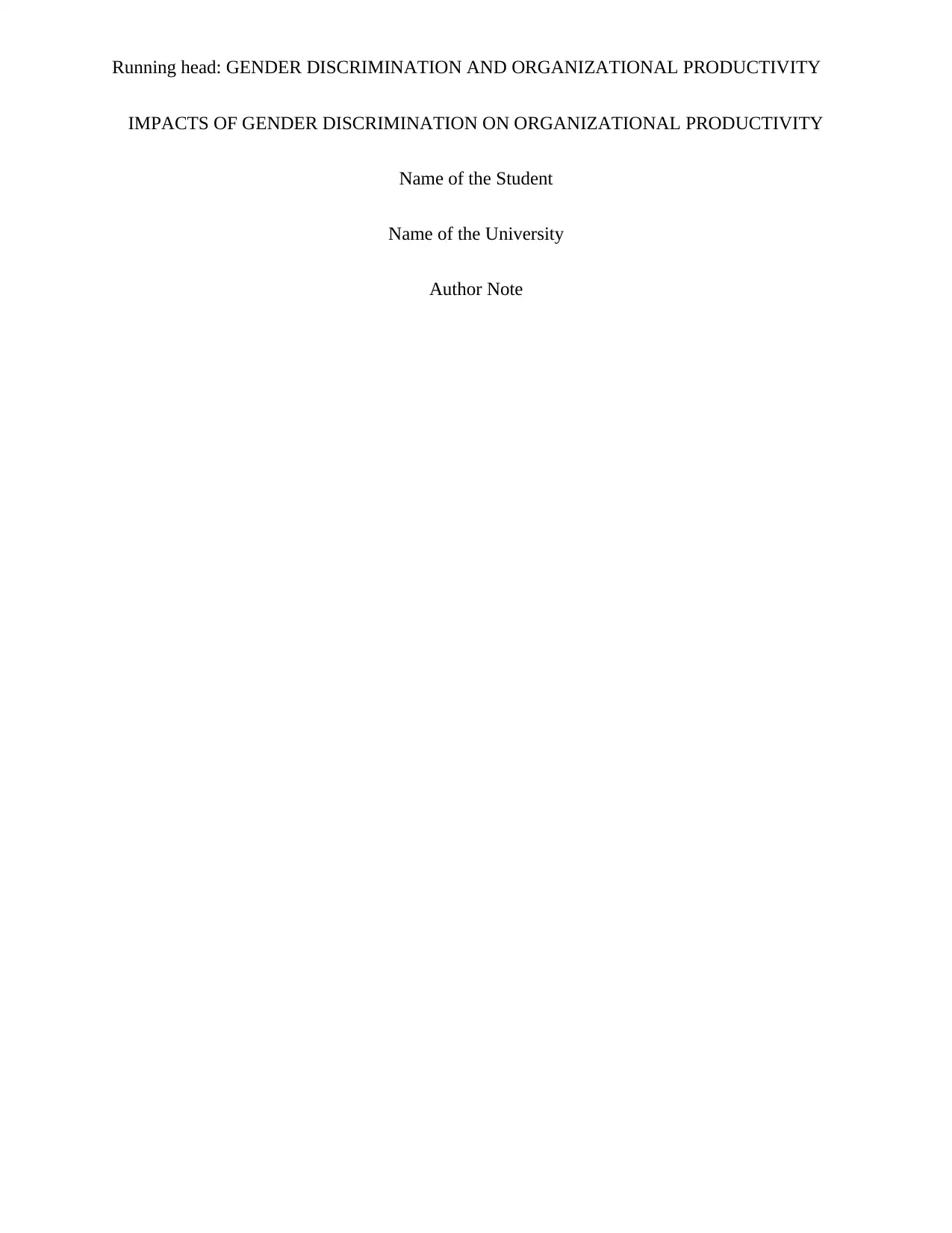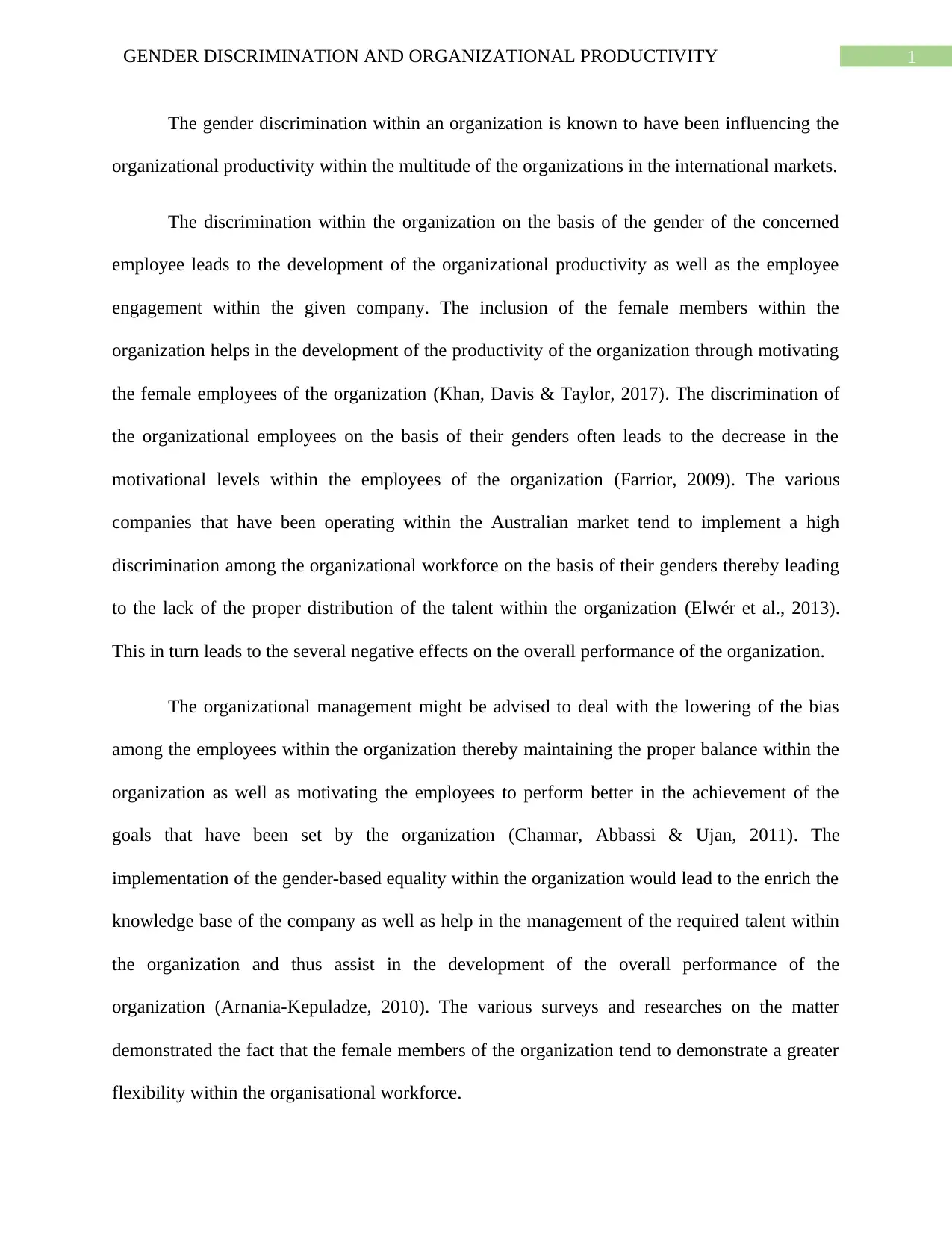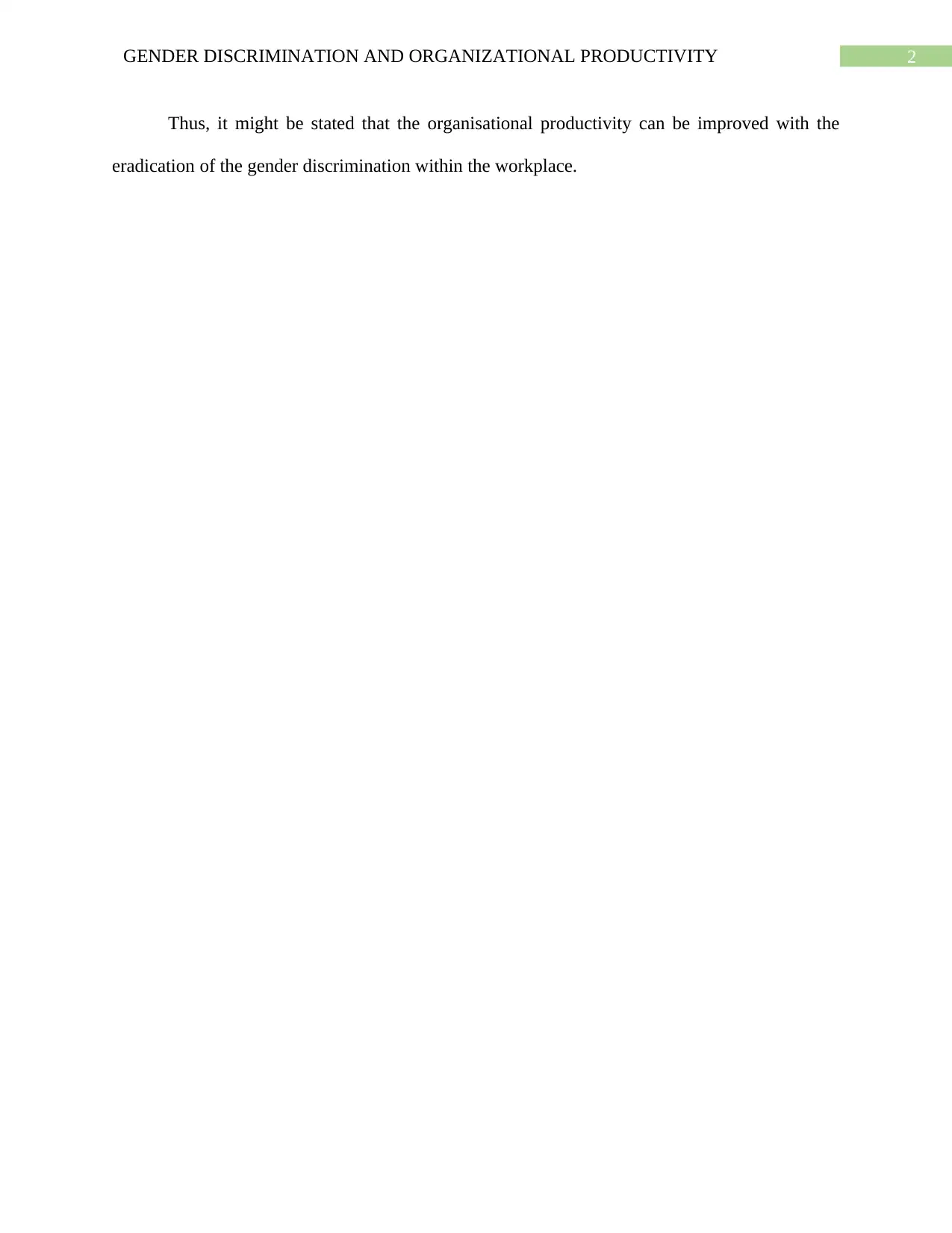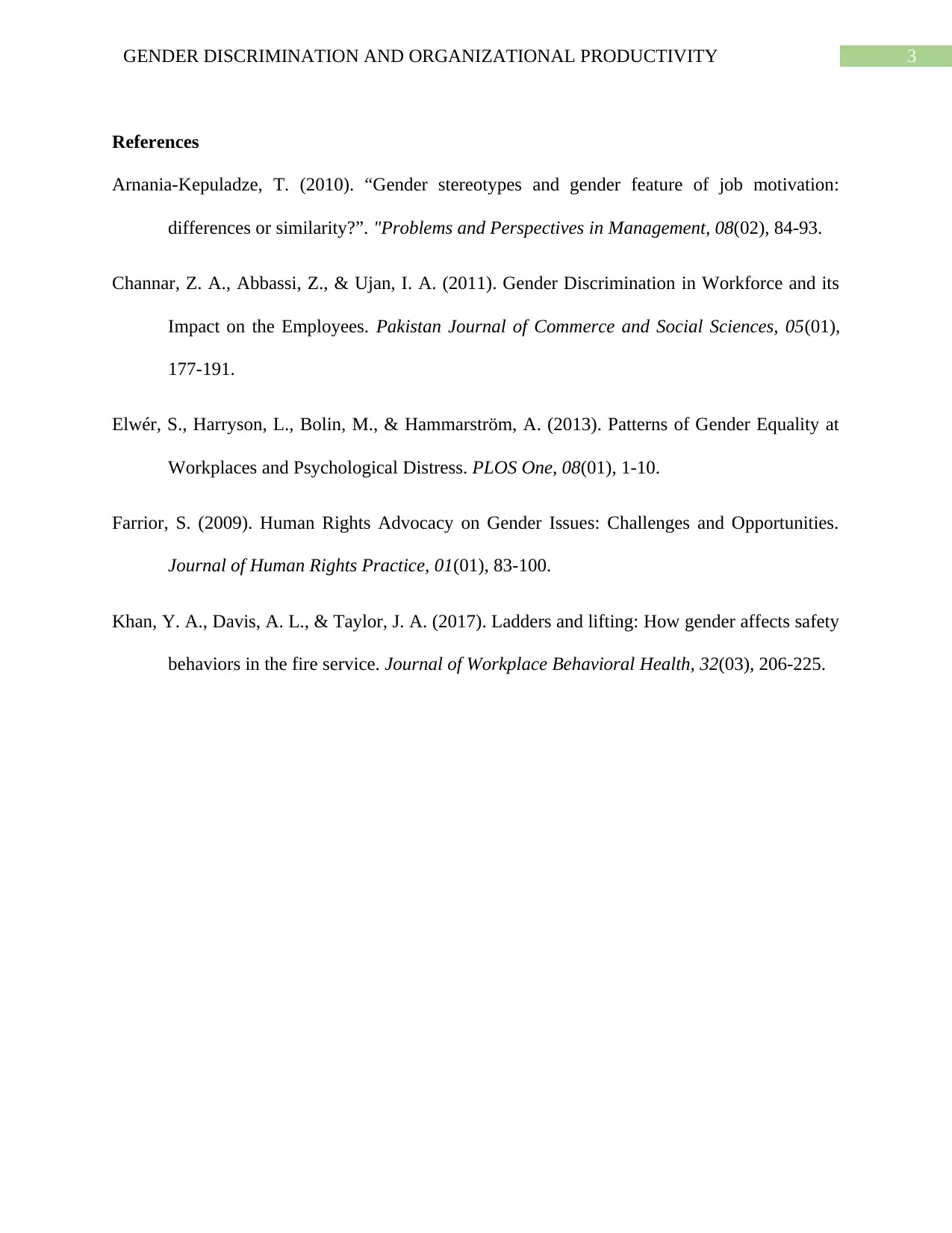MGT502 Business Communication: Gender Discrimination Report
VerifiedAdded on 2023/01/18
|4
|612
|41
Report
AI Summary
This report investigates the significant influence of gender discrimination on organizational productivity. It explores how workplace bias, particularly in the Australian market, affects employee engagement, motivation, and talent distribution. The research emphasizes the importance of including female employees, which can lead to improved productivity. The report highlights the negative impacts of gender discrimination and suggests strategies for organizational management to foster gender equality, enrich the knowledge base, and improve overall performance. The report also includes references to relevant studies and surveys that support the findings and conclusions presented, underscoring the benefits of eradicating gender discrimination in the workplace.
1 out of 4











![[object Object]](/_next/static/media/star-bottom.7253800d.svg)